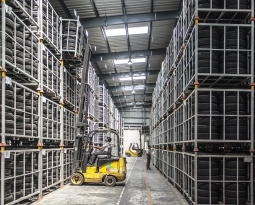Washington Patent of the Month – August 2023
Parkinson’s disease (PD) is a neurodegenerative disorder characterized by the loss of dopaminergic neurons in the brain, leading to motor symptoms such as tremors, rigidity, and difficulty in movement. Currently, the primary treatment for PD involves oral administration of levodopa, a precursor of dopamine, along with a peripheral dopa decarboxylase inhibitor (DDI) to enhance its effectiveness. However, oral treatment has limitations due to variable absorption and fluctuations in motor function.
Impel Pharmaceuticals, Inc., a leading pioneer in the field of neurology, has introduced a groundbreaking method for treating PD. Their patented method involves delivering a dry pharmaceutical composition directly to the nasal surface area of the patient. The composition comprises levodopa, DDI, and excipients, and can be administered intranasally using a specially designed delivery device.
This novel approach offers several advantages over traditional oral administration. By delivering the medication directly to the respiratory tract, absorption becomes rapid and consistent, reducing fluctuations in motor function. Additionally, this method eliminates the need for concomitant oral DDI, simplifying the treatment regimen and potentially improving patient compliance.
Clinical studies have shown promising results with the intranasal delivery of levodopa and DDI. Patients experienced rapid reversal of motor symptoms within 60 minutes, accompanied by a significant increase in plasma levodopa concentration. The formulation of the dry pharmaceutical composition ensures optimal drug delivery, with particles sized between 1 μm and 500 μm, allowing for efficient absorption in the respiratory tract.
Impel Pharmaceuticals’ intranasal treatment method not only benefits patients with PD but also shows promise in addressing other Parkinson syndromes resulting from toxic insults. Whether it is post-encephalitic parkinsonism, symptomatic parkinsonism following carbon monoxide or manganese intoxication, this innovative approach offers hope for improved management of these conditions.
Are you developing new technology for an existing application? Did you know your development work could be eligible for the R&D Tax Credit and you can receive up to 14% back on your expenses? Even if your development isn’t successful your work may still qualify for R&D credits (i.e. you don’t need to have a patent to qualify). To find out more, please contact a Swanson Reed R&D Specialist today or check out our free online eligibility test.
Who We Are:
Swanson Reed is one of the U.S.’ largest Specialist R&D tax advisory firms. We manage all facets of the R&D tax credit program, from claim preparation and audit compliance to claim disputes.
Swanson Reed regularly hosts free webinars and provides free IRS CE and CPE credits for CPAs. For more information please visit us at www.swansonreed.com/webinars or contact your usual Swanson Reed representative.

















